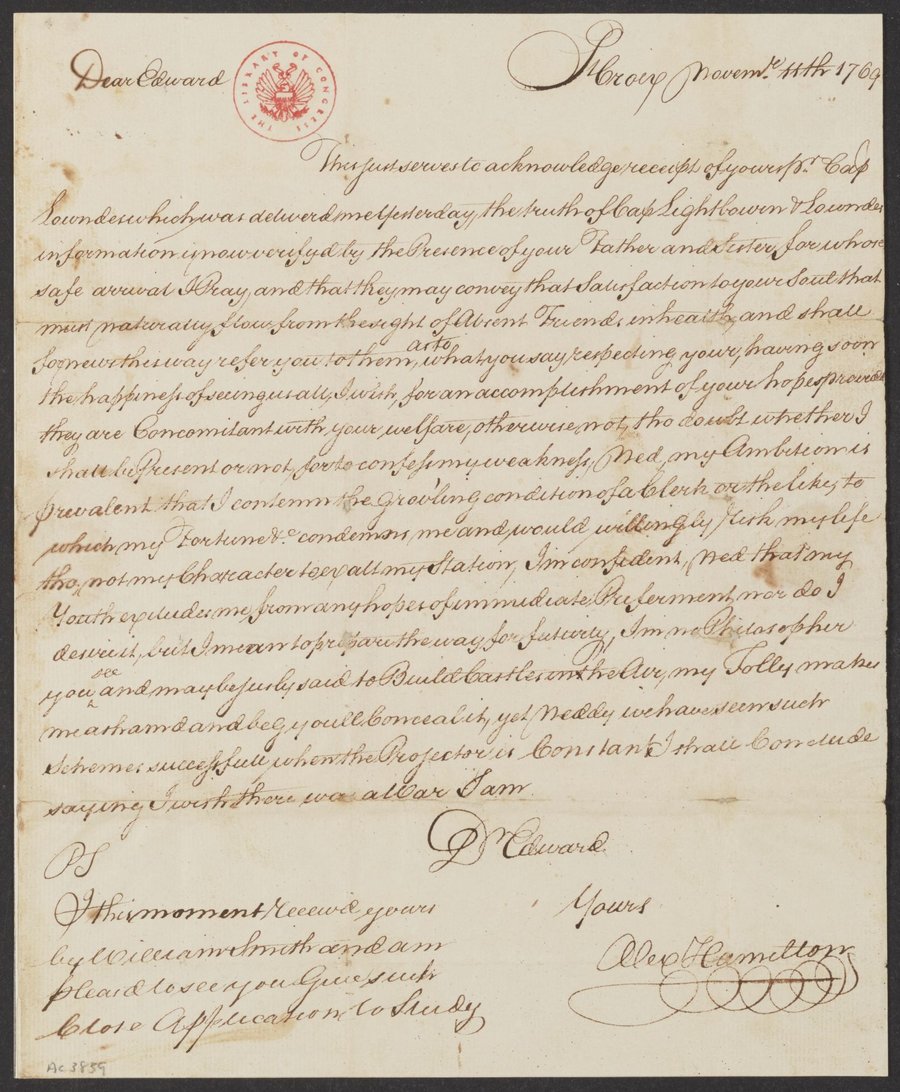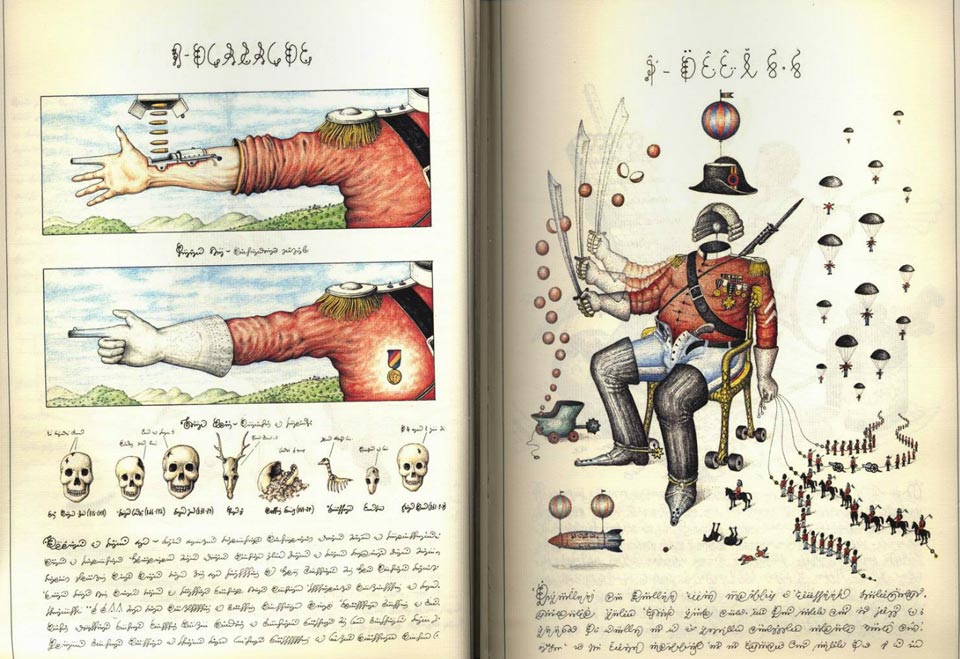[Most Recent Entries] [Calendar View]
Monday, September 25th, 2017
| Time | Event |
| 11:00a | Behold the “Book Wheel”: The Renaissance Invention Created to Make Books Portable & Help Scholars Study (1588)
Devotees of print may object, but we readers of the 21st century enjoy a great privilege in our ability to store a practically infinite number of digitized books on our computers. What's more, those computers have themselves shrunk down to such compactness that we can carry them around day and night without discomfort. This would hardly have worked just forty years ago, when books came only in print and a serious computer could still fill a room. The paper book may remain reasonably competitive even today with the convenience refined over hundreds and hundreds of years, but its first handmade generations tended toward lavish, weighty decoration and formats that now look comically oversized.
These posed real problems of unwieldiness, one solution to which took the unlikely form of the bookwheel. In 1588's The Various and Ingenious Machines of Captain Agostino Ramelli, the Italian engineer of that name "outlined his vision for a wheel-o-books that would employ the logic of other types of wheel (water, Ferris, 'Price is Right', etc.) to rotate books clockwork-style before a stationary user," writes the Atlantic's Megan Garber. The design used "epicyclic gearing — a system that had at that point been used only in astronomical clocks — to ensure that the shelves bearing the wheel's books (more than a dozen of them) would remain at the same angle no matter the wheel's position. The seated reader could then employ either hand or foot controls to move the desired book pretty much into her (or, much more likely, his) lap." This rotating bookcase gave 16th century readers the ability to read heavy books in place, with far greater ease. https://www.youtube.com/watch?v=Kuc40J6i
In his 1588 book, Ramelli added:
Inventors all over Europe created their own versions of the bookwheel during the 17th and 18th centuries, fourteen examples of which still exist. (The one pictured in the middle of the post, built around 1650, now resides in Leiden.) Just above you can seen a bookwheel reconstructed and operational in a virtual reality MMORPG, a technology beyond the wildest dreams of Ramelli and his colleagues in imaginative engineering. Even architect Daniel Libeskind has built one, based on Ramelli's design and exhibited in his homeland at the 1986 Venice Biennale. Alas, after it went to Geneva for an exhibition at the Palais Wilson, it fell victim to a terrorist fire bombing. Innovation, it seems, will always have its enemies. Related Content: Discover the Jacobean Traveling Library: The 17th Century Precursor to the Kindle The Art of Making Old-Fashioned, Hand-Printed Books Wonderfully Weird & Ingenious Medieval Books Wearable Books: In Medieval Times, They Took Old Manuscripts & Turned Them into Clothes 800 Free eBooks for iPad, Kindle & Other Devices Based in Seoul, Colin Marshall writes and broadcasts on cities and culture. He’s at work on the book The Stateless City: a Walk through 21st-Century Los Angeles, the video series The City in Cinema, the crowdfunded journalism project Where Is the City of the Future?, and the Los Angeles Review of Books’ Korea Blog. Follow him on Twitter at @colinmarshall or on Facebook. Behold the “Book Wheel”: The Renaissance Invention Created to Make Books Portable & Help Scholars Study (1588) is a post from: Open Culture. Follow us on Facebook, Twitter, and Google Plus, or get our Daily Email. And don't miss our big collections of Free Online Courses, Free Online Movies, Free eBooks, Free Audio Books, Free Foreign Language Lessons, and MOOCs. |
| 2:00p | Hamilton Mania Inspires the Library of Congress to Put 12,000 Alexander Hamilton Documents Online
Remember when bloody, bloody Andrew Jackson seemed like a shoe in for Best Sepulchral Historical Figure Brought Back to Life by an American Musical? Alas for the 7th President, a little juggernaut called Hamilton came along, and just like that, it was the first Treasury Secretary and author of the Federalist Papers who had a fan base on the order of Beatlemania. Teachers, historians, and librarians thrilled to reports of kids singing along with the Hamilton soundtrack. Playwright and original star Lin-Manuel Miranda’s clever rap lyrics ensured that young Hamilfans (and their parents, who reportedly were never allowed to listen to anything else in the car) would become well versed in their favorite founding father’s personal and professional history. Out of town visitors who spend upwards of a month’s grocery budget for Broadway tickets voluntarily side trip way uptown to tour Hamilton Grange. The insatiable selfie imperative drives them to Central Park and Museum of the City of New York in search of larger than life sculptures. They take the PATH train to Weehawken to pay their respects in the spot where Hamilton was felled by Aaron Burr… Hamilton merchandise, needless to say, is selling briskly. Books, t-shirts, jewelry, bobble heads commemorative mugs… The Library of Congress is not out to cash in on this cultural moment in the monetary sense. But "given the increased interest in Hamilton," says Julie Miller, a curator of early American manuscripts, it's no accident that the Library has taken pains to digitize 12,000 Hamilton documents and make them available on the web. The collection includes speeches, a draft of the Reynolds Pamphlet, financial accounts, school exercises and correspondence, both personal and public, encompassing such marquee names as John Adams, Thomas Jefferson, the Marquis de Lafayette, and George Washington.
One need not be a musical theater fan to appreciate the emotion of the letter he wrote to his wife, Elizabeth Schuyler, on the eve of his fateful duel with Aaron Burr:
Explore the Library of Congress’ Hamilton collection here. And enter the online lottery for $10 Hamilton tickets because, hey, somebody’s got to win. Related Content: Discover Thomas Jefferson’s Cut-and-Paste Version of the Bible, and Read the Curious Edition Online Watch a Witty, Gritty, Hardboiled Retelling of the Famous Aaron Burr-Alexander Hamilton Duel “Alexander Hamilton” Performed with American Sign Language Ayun Halliday is an author, illustrator, theater maker and Chief Primatologist of the East Village Inky zine. Follow her @AyunHalliday. Hamilton Mania Inspires the Library of Congress to Put 12,000 Alexander Hamilton Documents Online is a post from: Open Culture. Follow us on Facebook, Twitter, and Google Plus, or get our Daily Email. And don't miss our big collections of Free Online Courses, Free Online Movies, Free eBooks, Free Audio Books, Free Foreign Language Lessons, and MOOCs. |
| 5:06p | Stream Online The Vietnam War, the New Documentary by Ken Burns & Lynn Novick Right now, PBS is in the midst of airing The Vietnam War, a ten-part, 18-hour documentary film series directed by Ken Burns and Lynn Novick. The "immersive 360-degree narrative" tells "the epic story of the Vietnam War," using never-before-seen footage and interviews. If you're not watching the series on the TV, you can also view it on the web and through PBS apps for smartphones, tablets, Apple TV, Roku and Amazon Fire TV. Episode 1 appears above. Find all of them here. Note: If these videos don't stream outside of the US, we apologize in advance. Sometimes PBS geo-restricts their videos. Also, these videos likely won't stay online forever. If you're interested in watching the series, I'd get going sooner than later. Follow Open Culture on Facebook and Twitter and share intelligent media with your friends. Or better yet, sign up for our daily email and get a daily dose of Open Culture in your inbox. If you'd like to support Open Culture and our mission, please consider making a donation to our site. It's hard to rely 100% on ads, and your contributions will help us provide the best free cultural and educational materials. Related Content: Mickey Mouse In Vietnam: The Underground Anti-War Animation from 1968, Co-Created by Milton Glaser Stream Online <i>The Vietnam War</i>, the New Documentary by Ken Burns & Lynn Novick is a post from: Open Culture. Follow us on Facebook, Twitter, and Google Plus, or get our Daily Email. And don't miss our big collections of Free Online Courses, Free Online Movies, Free eBooks, Free Audio Books, Free Foreign Language Lessons, and MOOCs. |
| 6:00p | An Introduction to the Codex Seraphinianus, the Strangest Book Ever Published
Imagine you could talk to Hieronymus Bosch, the authors of the Book of Revelation, or of the Voynich Manuscript—a bizarre 15th century text written in an uncrackable code; that you could solve centuries-old mysteries by asking them, “what were you thinking?” You might be disappointed to hear them say, as does Luigi Serafini, author and illustrator of the Codex Seraphinianus, “At the end of the day [it’s] similar to the Rorschach inkblot test. You see what you want to see. You might think it’s speaking to you, but it’s just your imagination.” If you were a longtime devotee of an intensely symbolic, mythic text, you might refuse to believe this. It must mean something, fans of the Codex have insisted since the book’s appearance in 1981. It shares many similarities with the Voynich Manuscript (highlighted on our site last week), save its relatively recent vintage and living author: both the Seraphinianus and the Voynich seem to be compendiums of an otherworldly natural science and art, and both are written in a wholly invented language.
Serafini tells Wired he thinks Voynich is a fake. “The Holy Roman Emperor Rudulf II loved ancient manuscripts; somebody swindled him and spread the rumor that it was original. The idea of made-up languages is not new at all.” As for his own made-up language in the Codex, he avers, “I always said that there is no meaning behind the script; it’s just a game.” But it is not a hoax. Though he hasn’t minded the money from the book’s cult popularity, he created the book, he says, “trying to reach out to my fellow people, just like bloggers do.” It is, he says, "the product of a generation that chose to connect and create a network, rather than kill each other in wars like their fathers did." The Codex, writes Abe books, who made the short video review above, is “essentially an encyclopedia about an alien world that clearly reflects our own, each chapter appears to deal with key facets of this surreal place, including flora, fauna, science, machines, games and architecture.” That’s only a guess given the unintelligible language.
The illustrations seem to draw from Bosch, Leonardo da Vinci, and the medieval travelogue as much as from the surrealism of contemporary European artists like Fantastic Planet animator René Laloux. (Justin Taylor at The Believer points to a number of similar 20th century texts, like Borges' Book of Imaginary Beings.)
Serafini has been delighted to see an extensive internet community coalesce around the book, and has had his fun with it. He “now states,” writes Dangerous Minds, “that a stray white cat that joined him while he created the Codex in Rome in the 1970s was actually the real author, telepathically guiding Serafini as he drew and ‘wrote.’” You can now, thanks to a recent, relatively affordable edition published by Rizzoli, purchase your copy of the Codex. Buy now, I’d say. First editions of the book now fetch upwards of $5000, and the its popularity shows no sign of slowing. Also check out the more recent Codex Seraphinianus wall calendar.
Related Content: Wonderfully Weird & Ingenious Medieval Books Carl Jung’s Hand-Drawn, Rarely-Seen Manuscript The Red Book: A Whispered Introduction Josh Jones is a writer and musician based in Durham, NC. Follow him at @jdmagness An Introduction to the <I>Codex Seraphinianus</I>, the Strangest Book Ever Published is a post from: Open Culture. Follow us on Facebook, Twitter, and Google Plus, or get our Daily Email. And don't miss our big collections of Free Online Courses, Free Online Movies, Free eBooks, Free Audio Books, Free Foreign Language Lessons, and MOOCs. |
| << Previous Day |
2017/09/25 [Calendar] |
Next Day >> |









